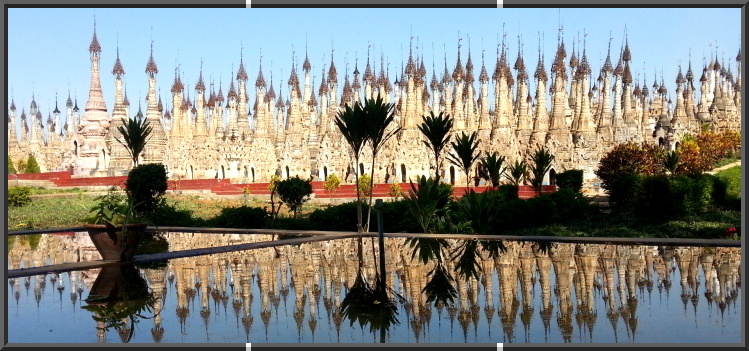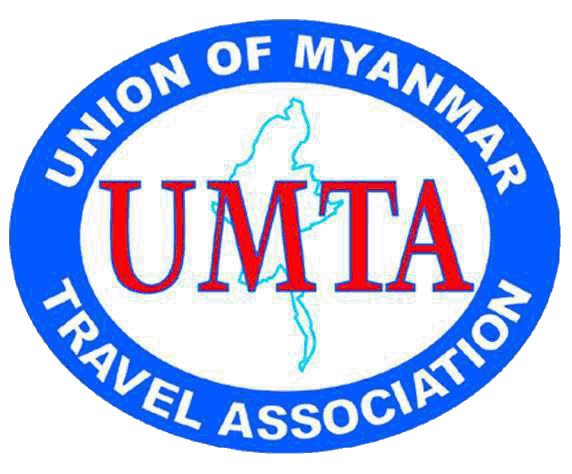 |
 |  |  |  |  |  |  |  |  | | |
MINGUN
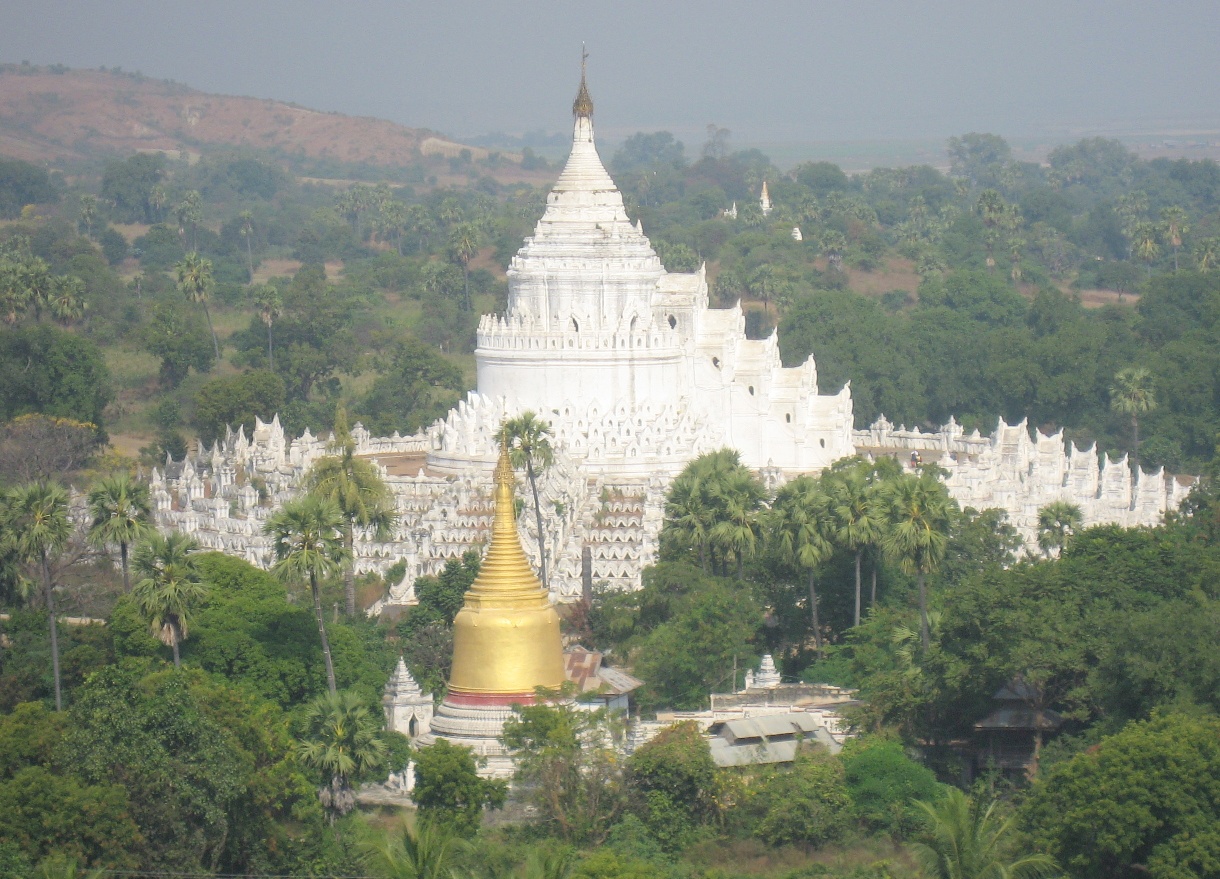
Mingun is a city of the Sagaing division, located along the Ayeyarwaddy River, 11 km from Mandalay.
MINGUN PAHTODAWGYI
is a massive uncompleted Buddhist temple, 50 meters high, began by King Bodawpaya in 1790.
If the building had been completed, it would have been the largest in the world with a height of 150 meters! Unfortunately it was seriously damaged by the earthquake of 1839.
In front of Pahtodawgyi, on the river’s bank there stood two big lions, ancient “guardians” of the temple. Now only the posterior parts still remain.
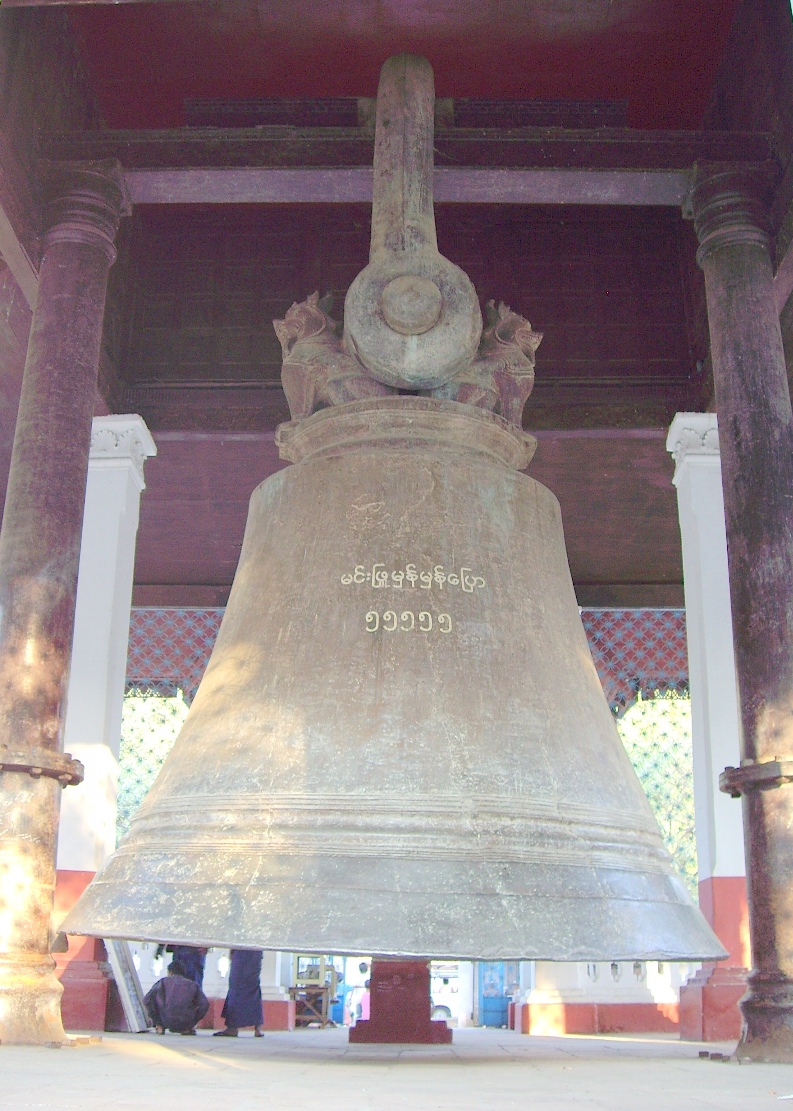
MINGUN BELL
Located next to Pahtodawgyi. King Bodawpaya did melt a giant bell to go with his huge stupa. Weighing 90 tons or 55,555 viss (1 viss = 1.6 kg), is today the largest ringing bell in the world.
MYA THEINDAN
Just a couple of hundred meters from the Great Stupa and bell, lies the beautiful Hsinbyume or Myatheindan Pagoda, representing the mythical Mount Meru. It was built in 1816 by Bodawpaya's grandson and successor Bagyidaw, to be dedicated to the memory of his first consort Princess Hsinbyume.
| |
|
|
 |
|
 | | 
 |
|
ITA 
MANDALAY
 Mandalay has been the last
capital of the Myanmar Kings. It is located in Central Myanmar, 668 km north of
Yangon. Also known as Yatanabon-Naypyitaw (which means Gem City) it was founded
in 1857 by King Mindon.
Only two Burmese kings ruled from there, King
Mindon and his son King Thibaw, before the British conquest of Upper Burma in
1885. Mandalay has been the last
capital of the Myanmar Kings. It is located in Central Myanmar, 668 km north of
Yangon. Also known as Yatanabon-Naypyitaw (which means Gem City) it was founded
in 1857 by King Mindon.
Only two Burmese kings ruled from there, King
Mindon and his son King Thibaw, before the British conquest of Upper Burma in
1885.
Today it is the second largest city after Yangon, boasting a rich cultural heritage. In fact, it is deemed the cultural and religious capital of Myanmar and as such it is home to many monasteries, but is also a commercial center with rail, road, river and air links to all parts of the country. The
city is centered around the Royal
Palace and has wide lanes filled with bicycles and
motorcycles. Mandalay is also renowned for its monks (half of country's monks reside in Mandalay and the surrounding areas); it is said that every 4 people, one is a monk. Places not to be missed are Shwenandaw Monastery, Kuthodaw Paya, Mandalay Hill and Mahamuni Paya. Interesting stops can be made in the workshops of gold leaves, tapestries, marble, bronze, wood carvings etc...
SAGAING
 Located on the western bank of Ayeyarwaddy River, 20 km to the southwest of Mandalay. Sagaing was founded by Sawyun as a capital around 1315, after the fall of Bagan. Its period of importance was short: in 1364 capital was moved across the river to Inwa. Nowadays Sagaing is an important religious and monastic center with numerous Buddhist monasteries of monks and nuns. Pagodas and monasteries crowd the numerous hills along the ridge running parallel to the river. Among them, are definitely worth visiting Soon U Ponya Shin, U Minthonsae (30 caves) and Kaungmudaw. Located on the western bank of Ayeyarwaddy River, 20 km to the southwest of Mandalay. Sagaing was founded by Sawyun as a capital around 1315, after the fall of Bagan. Its period of importance was short: in 1364 capital was moved across the river to Inwa. Nowadays Sagaing is an important religious and monastic center with numerous Buddhist monasteries of monks and nuns. Pagodas and monasteries crowd the numerous hills along the ridge running parallel to the river. Among them, are definitely worth visiting Soon U Ponya Shin, U Minthonsae (30 caves) and Kaungmudaw.
AMARAPURA
Amarapura,
Pali for “City of Immortality”, was the capital of Myanmar for three distinct
periods during the Konbaung dynasty (18th and 19th centuries), before finally being supplanted by Mandalay. It was founded by King Bodawpaya
of the Konbaung Dynasty as his new capital in 1783, 11 km north of
Mandalay.
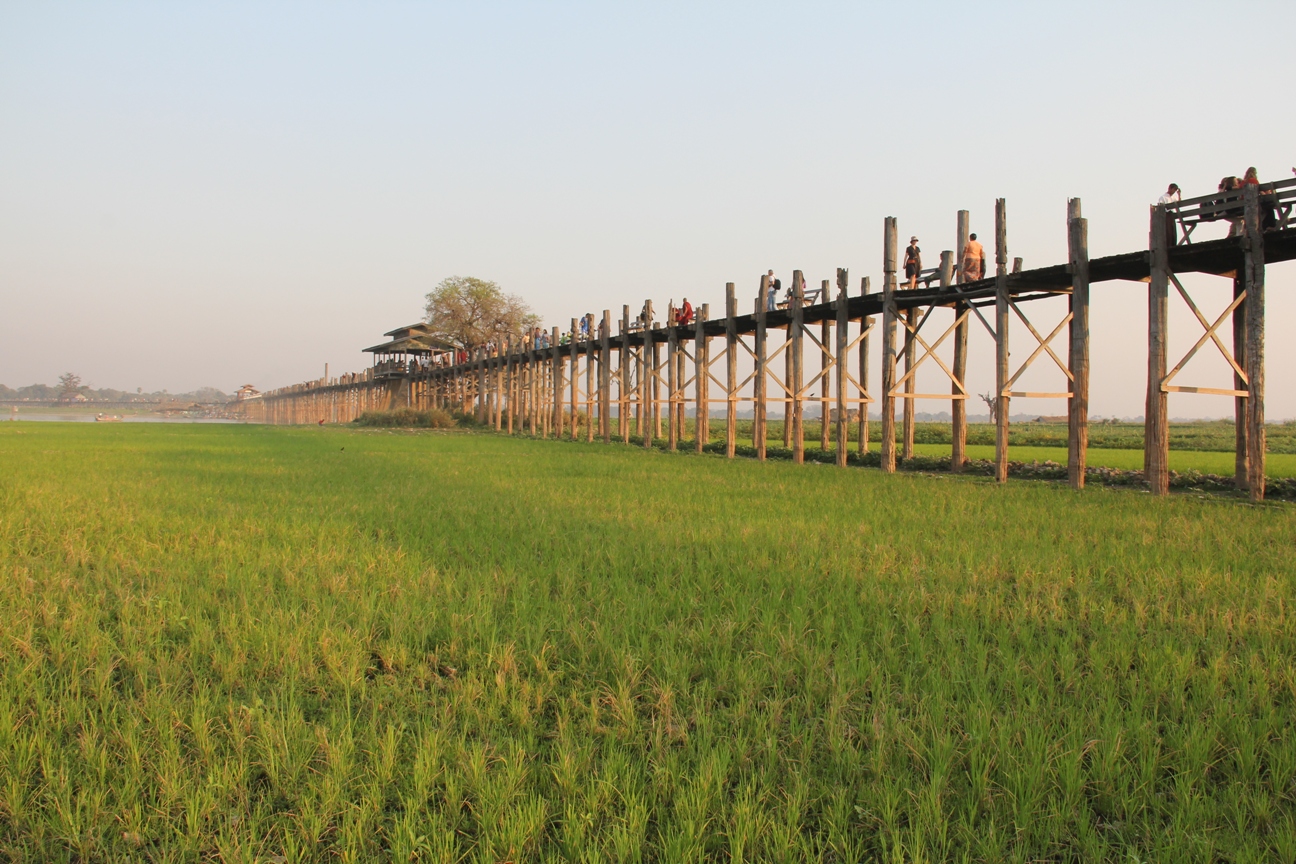
Today little remains of the old city as the palace buildings were dismantled and moved by elephant to the new location (Mandalay). The city is known nowadays for its traditional silk and cotton weaving, and bronze casting. Sights of interest: Maha Gandayon Monastery, which houses several hundreds of young monks; Pahtodawgyi, a stupa built by King Bodawpaya in 1816; Bagaya Kyaung, a wooden monastery founded by King Mindon; U Bein Bridge, a 1.2 km wooden footbridge (longest teak bridge in the world) built by the mayor U Bein retrieving the unwanted teak columns from the old palace of Ava; Kyautawgyi Paya, a stupa built by King Pagan in 1847 at the farther end of U Bein's bridge.
INWA (AVA)
 The ancient town of Inwa (“Mouth of the River”) was the capital of Upper Burma for nearly 400 years, with some interruptions. Founded by Thatoeminphyar in 1364 on the confluence of Irrawaddy and Myinge rivers, it was then destroyed by the Mon in 1752. Inwa lost its status as a royal city several times, until the capital was permanently moved to Amarapura in 1841 by King Tharrawaddy. Places worth visiting are the Bagaya Monastery, built with 267 teak trunks, and Menu Ok Kyaung, a brickwork monastery. The ancient town of Inwa (“Mouth of the River”) was the capital of Upper Burma for nearly 400 years, with some interruptions. Founded by Thatoeminphyar in 1364 on the confluence of Irrawaddy and Myinge rivers, it was then destroyed by the Mon in 1752. Inwa lost its status as a royal city several times, until the capital was permanently moved to Amarapura in 1841 by King Tharrawaddy. Places worth visiting are the Bagaya Monastery, built with 267 teak trunks, and Menu Ok Kyaung, a brickwork monastery.
PYIN U LWIN
 This is a scenic hill town, about
67 km. east of Mandalay, at an altitude of 1,070 meters. Originally a
small Danu village, it was founded in 1896. The town was renamed “Maymyo” (May's Town) by the name of Colonel James
May, commander of the Bengal Regiment. After the construction of the
railway, Maymyo became the summer capital of British
administration. It was also an important educational centre
during colonial times. The government of Burma renamed the town Pyin U Lwin. Today the city
has much evidence of the British
period, such as the colonial buildings and the descendants themselves of Indian and
Nepali workers, in addition to the presence of several
horse carriages. Orchards, gardens, sweater knitting, flowers and vegetables, coffee
plantations, silkworm and cow rearing are the main local activities. This is a scenic hill town, about
67 km. east of Mandalay, at an altitude of 1,070 meters. Originally a
small Danu village, it was founded in 1896. The town was renamed “Maymyo” (May's Town) by the name of Colonel James
May, commander of the Bengal Regiment. After the construction of the
railway, Maymyo became the summer capital of British
administration. It was also an important educational centre
during colonial times. The government of Burma renamed the town Pyin U Lwin. Today the city
has much evidence of the British
period, such as the colonial buildings and the descendants themselves of Indian and
Nepali workers, in addition to the presence of several
horse carriages. Orchards, gardens, sweater knitting, flowers and vegetables, coffee
plantations, silkworm and cow rearing are the main local activities.
 |
|


